A continuation from one of my previous blogs, so for those of you that haven’t yet read those, I urge you to read them first to give you a better understanding. Below are a great set of exercises useful for desk sitters and office based workers but are also relevant to those of you that may adopt the same posture whilst driving or sitting at home. They use minimal equipment and should help either relieve your pain or prevent it.
However, I would always advise you to consult one of our Sports Therapists or Physiotherapists here at Function Jigsaw first, to get yourself an accurate diagnosis and some advice.
So here goes…15 exercises to help you desk workers, and we’ll go from top to bottom. Read on to find out how your body works…
1. Chin tucks
An exercise that will help to activate our deep neck flexors and reduce the contribution of the more dominant Sternocleidomastoid (SCM) and Scalenes that pull our head forward. Keeping your head back should also help when typing.

2. Pectorals Stretch
Pectoralis Major and Minor are both important. A tight Major contributes to rounded shoulders, and consequently weak back muscles. A tight Pec minor can hinder the way our shoulder moves and the position of our shoulder blade due to its attachment sites.

3. Shoulder Squeezes
A really easy and useful exercise that coincides with the Pectorlis stretch above. Squeeze those shoulders and pull your shoulders down to activate your Rhomboids and Trapezius. If you’re unsure of the latter, shrug your shoulders whilst keeping your shoulders back…now do the opposite. However, if your Pecs are too tight, they’ll struggle to fight the resistance, and your shoulders will fall back into a rounded posture. Pair these together- Don’t do one without the other.
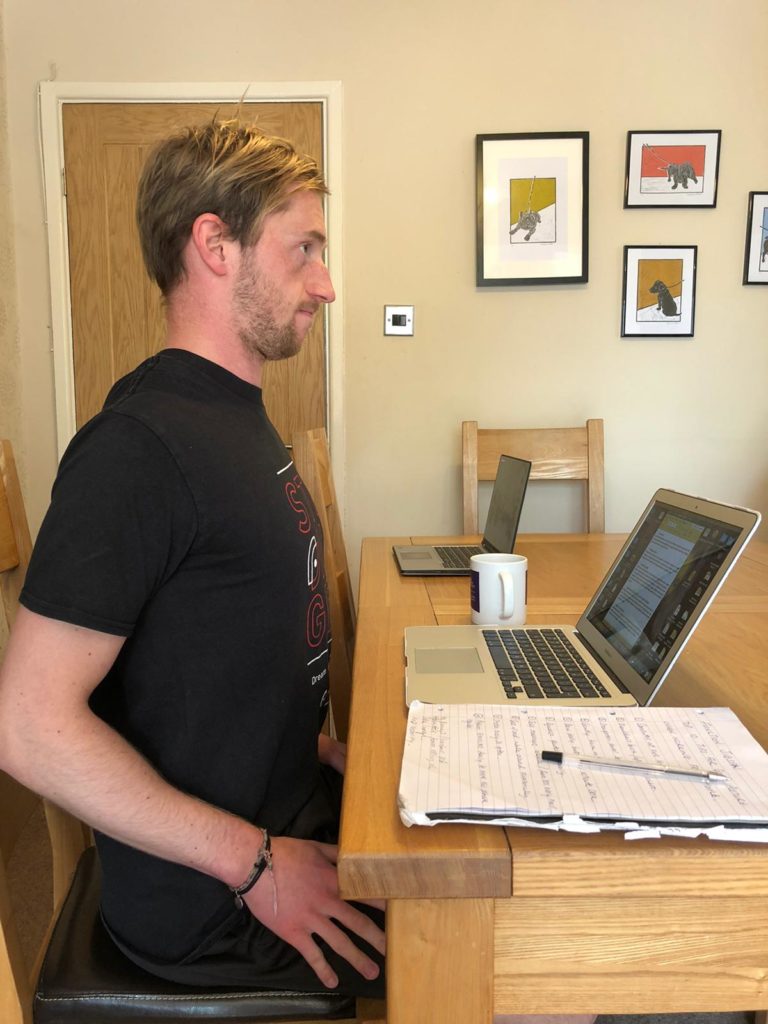
4. Upper Fibres of Trapezius (UFT) & SCM, Stretch & Release
Who gets stressed at work? Well…the UFT is the muscle that often takes the punishment for stress- shoulders touching our ears and hunching makes the UFT very tight. Keep these muscles at length with self-release techniques to reduce neck tightness, headaches and avoid trigger point central!
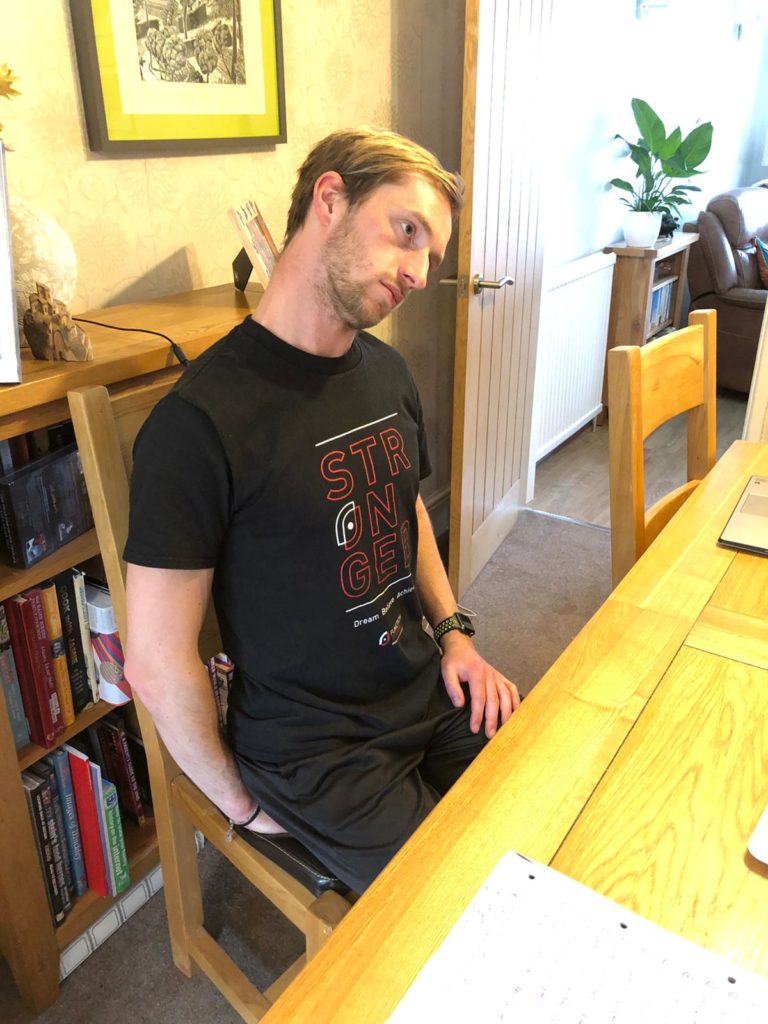
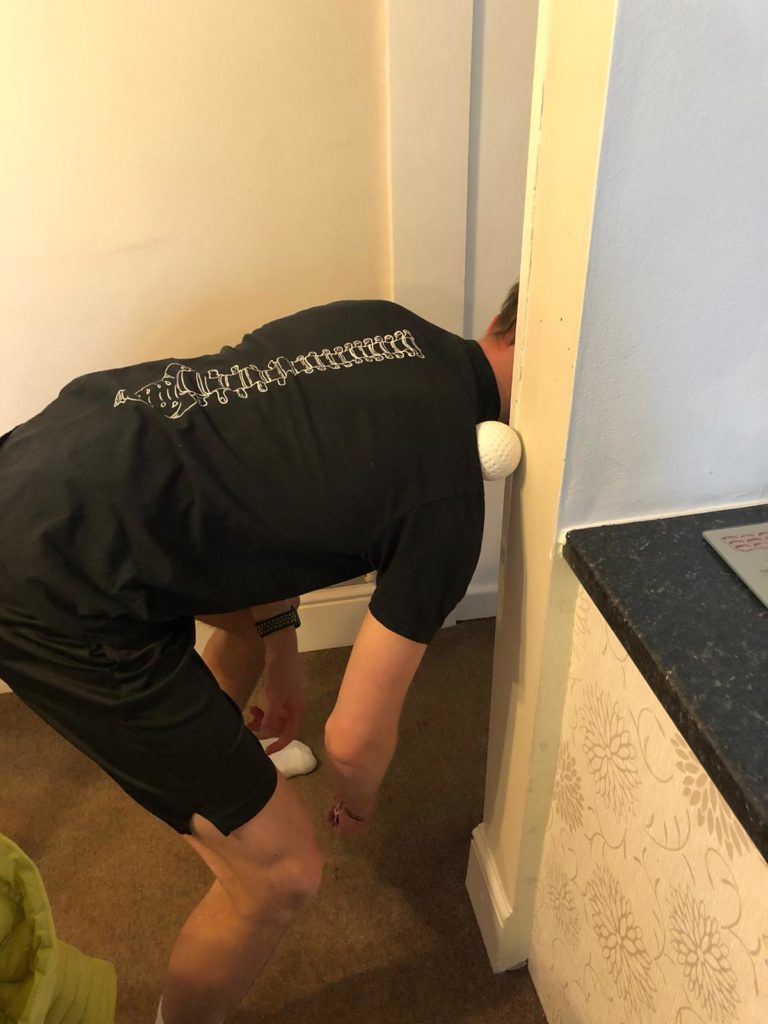
5. Rotator Cuff Activation
Our Shoulder stabilisers!- I’ve heard many of times being referred to as one muscle. We have 4 Rotator cuff muscles and all are extremely important in shoulder stability, mobility, strength and functionality. Unfortunately, these days we don’t use them enough…but we should.

6. Foam Roll/ Self massage Forearms
Fingers typing away at your laptop, mobile phones and even lots of handwriting, all puts undue stress on our elbow tendons. Regular stretching and self-release to prevent a build-up of tightness is key to prevent wrist, forearm and elbow pain.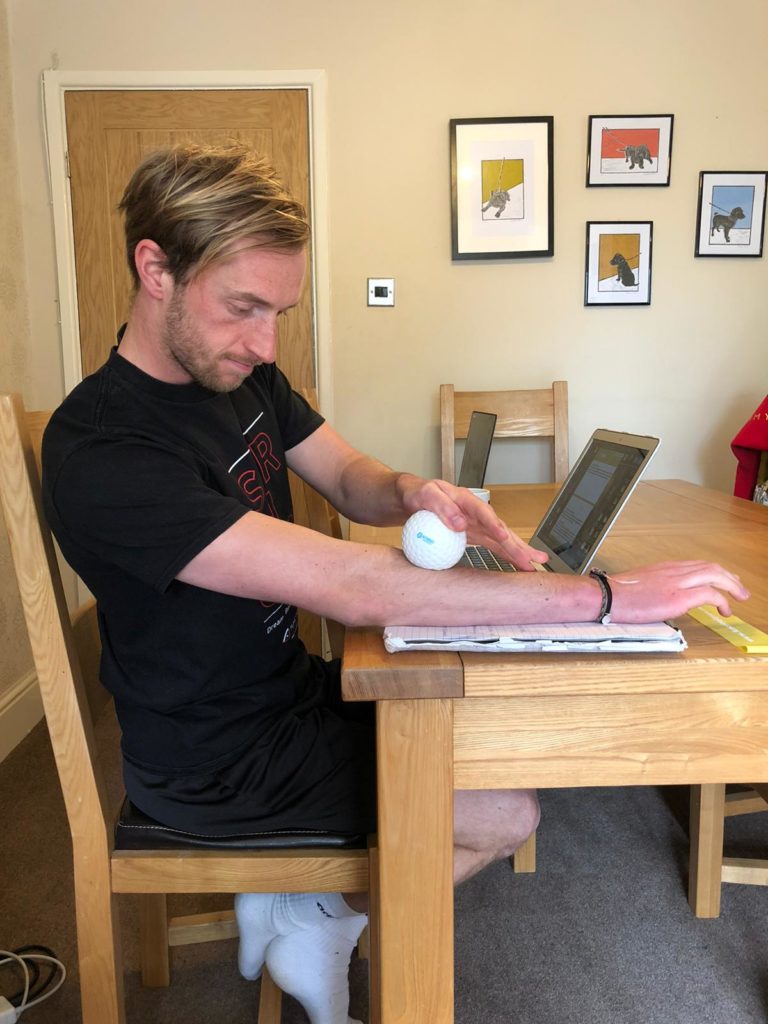
7. Thoracic Mobility
Thoracic refers to our mid spine (shoulder height to waist line). Hunched over our desk and laptop for 9 hours a day can make our spine very rigid indeed. The importance of mobility in our Thoracic does not get highlighted enough, but restrictions in these areas may contribute to back problems, breathing inefficiency, rib pain and fascial pain up and down the chain.
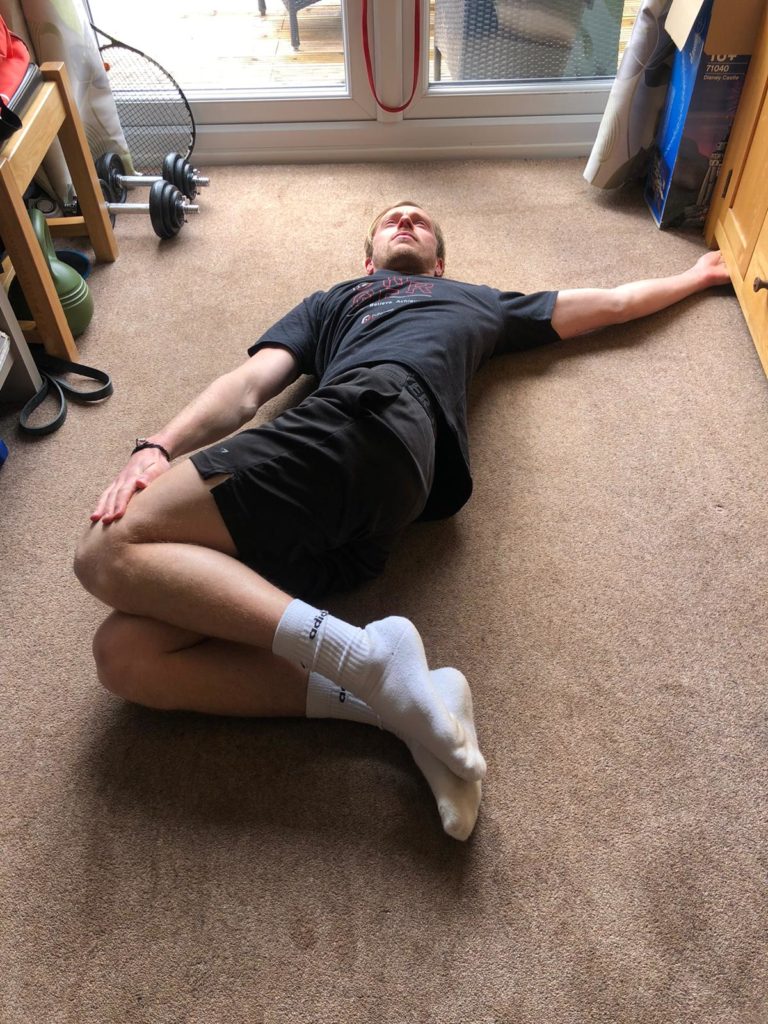
8. Core Activation
We all know our core right…it’s that six pack muscle?! WRONG! A common mistake in the health and fitness world – so no more crunches! The core is a complex biomechanical component of the body consisting of deep abdominal muscles (Transverse, Internal/External obliques), Superficial Rectus Abdominis, Paraspinals, Gluteals, Diaphragm, Pelvic floor and many more! It’s a muscular corset, responsible for spinal stability, breathing, movement control and energy transfer – in other words, we need it ALL the time. A complex muscle to activate so you might need to seek one of our professional Sports Therapists/ Physiotherapists here at Function Jigsaw, but plays a pivotal role in injury prevention and strength.
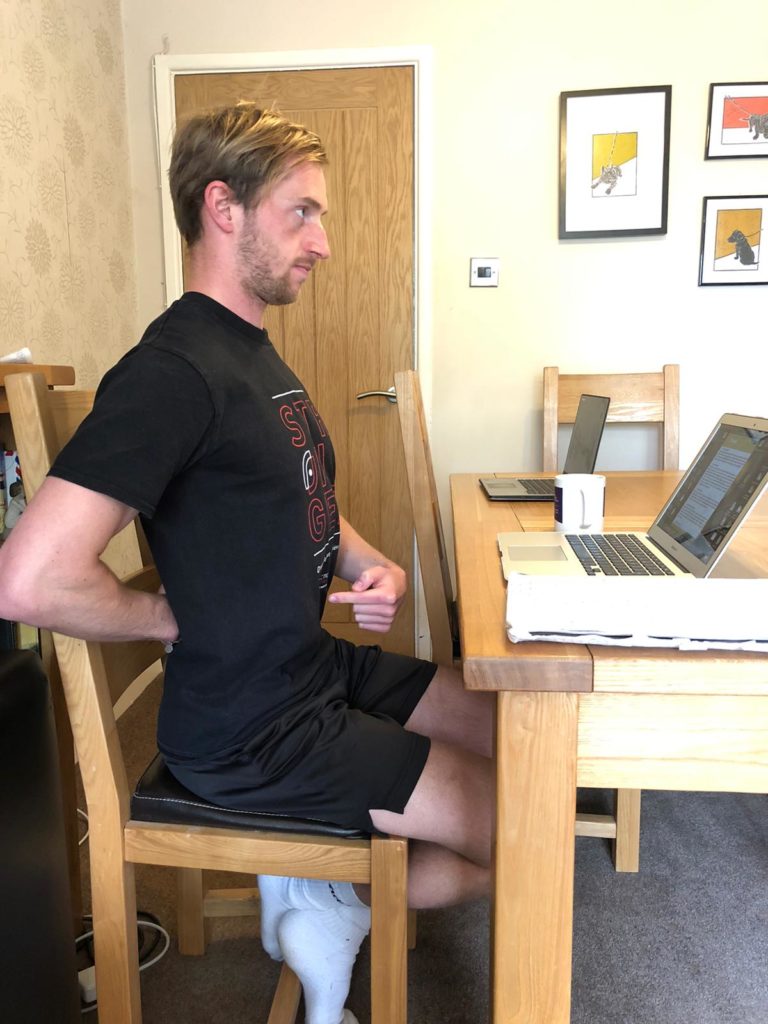
9. Lumbar Mobility
The most common complaint in our population- pain referring to the bottom of our back, which can be due to a multitude of things, but mainly sitting posture and lifting incorrectly. However, back stiffness is common in those that present asymptomatic, but more often than not will lead to some form of injury- so stay mobile for a healthy spine.

10. Quadriceps Foam Rolling
A group of 4 muscles that commonly get tight at the front of our thigh, mainly due to inactive Glutes. For example: To climb stairs, takes both of these muscle groups to contribute (as well as others), but more often than not, the Glutes contribute much less, and the Quads do more work. Additionally, a seated posture means those muscles on our thigh that cross the hip joint will also get tight.
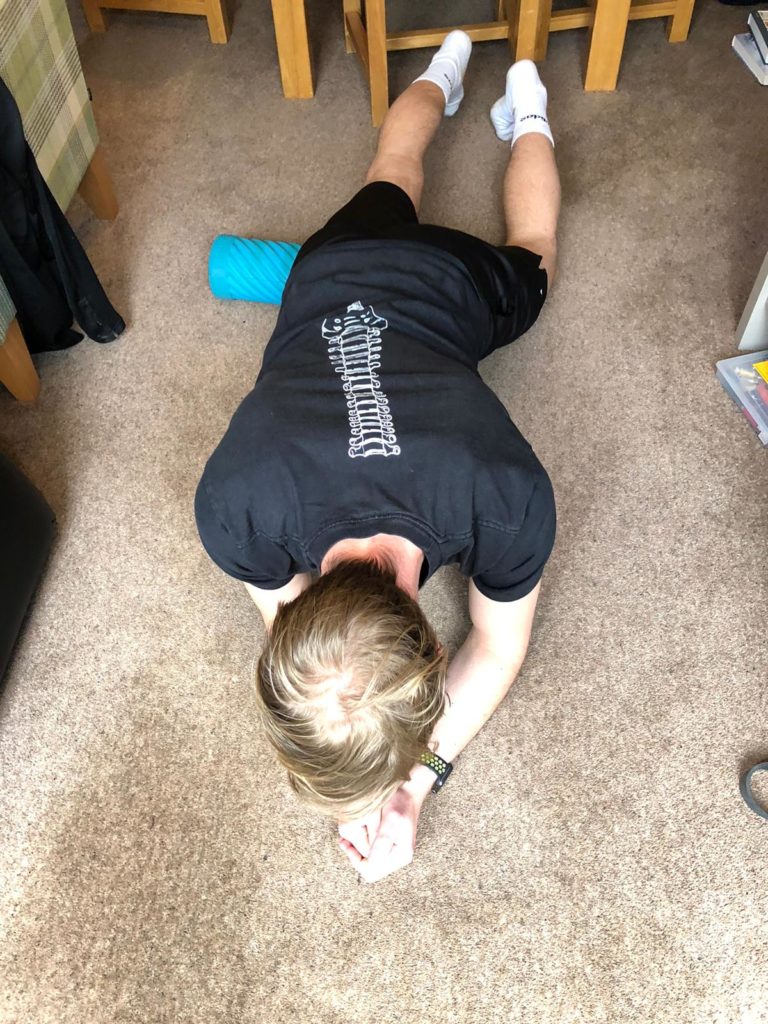
11. Hip Flexor Stretch
Hip flexors are situated quite deep and are one of few muscles that connect from the back of our skeleton (Lumbar spine) to the front (Femur/Thigh bone). Not only does a seated posture shorten this muscle do to its position, its strong physiological make up has a tendency to pull our pelvis and our spine forward when in a standing posture- a recipe for back pain if these aren’t managed.
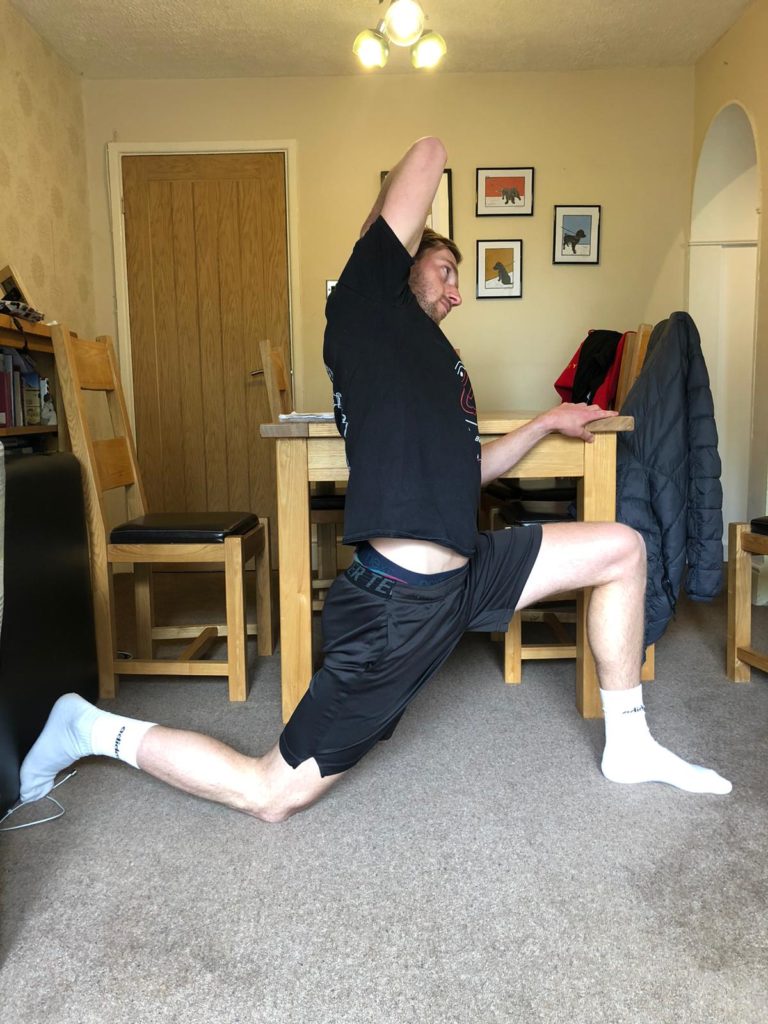
12. Glute Squeezes
Wow…these guys are important and almost always neglected! Glutes are our Buttocks, contributing towards core stability, energy transfer, hip stability, spinal stability, lower limb control, proprioception & mechanics and more! Get your glutes working efficiently with the rest of your body, but don’t forget to maintain them with myofascial release.
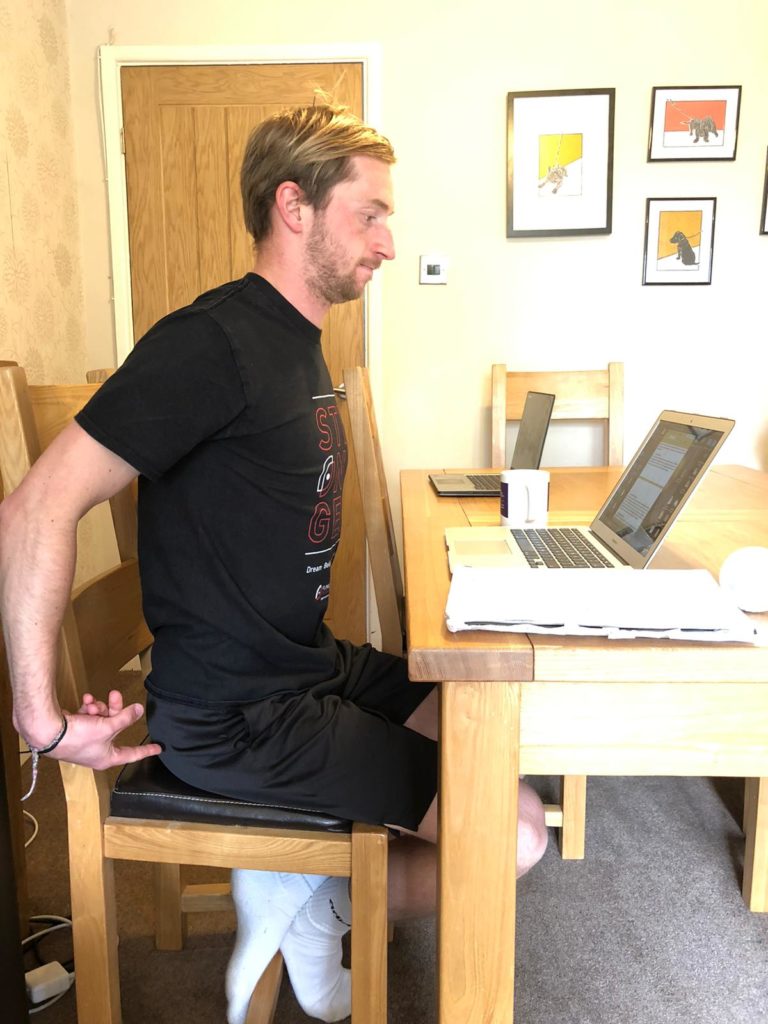
13. Hamstring Mobilisations
Tightness on the back of the thigh can be due to an anteriorly rotated pelvis (as we talked about before with tight hip flexors). Hamstrings actually attach to the back of the pelvis (ischium) meaning that these get pulled to a longer length due to other factors. Interestingly, this means stretching the hamstrings doesn’t really do much (in this desk scenario), but mobilising them is a good habit to get into. Changing the position of the pelvis will help – so work your Gluteus Maximus and Hamstrings and counteract those Hip Flexors- but once again, work these exercises together, not independently.
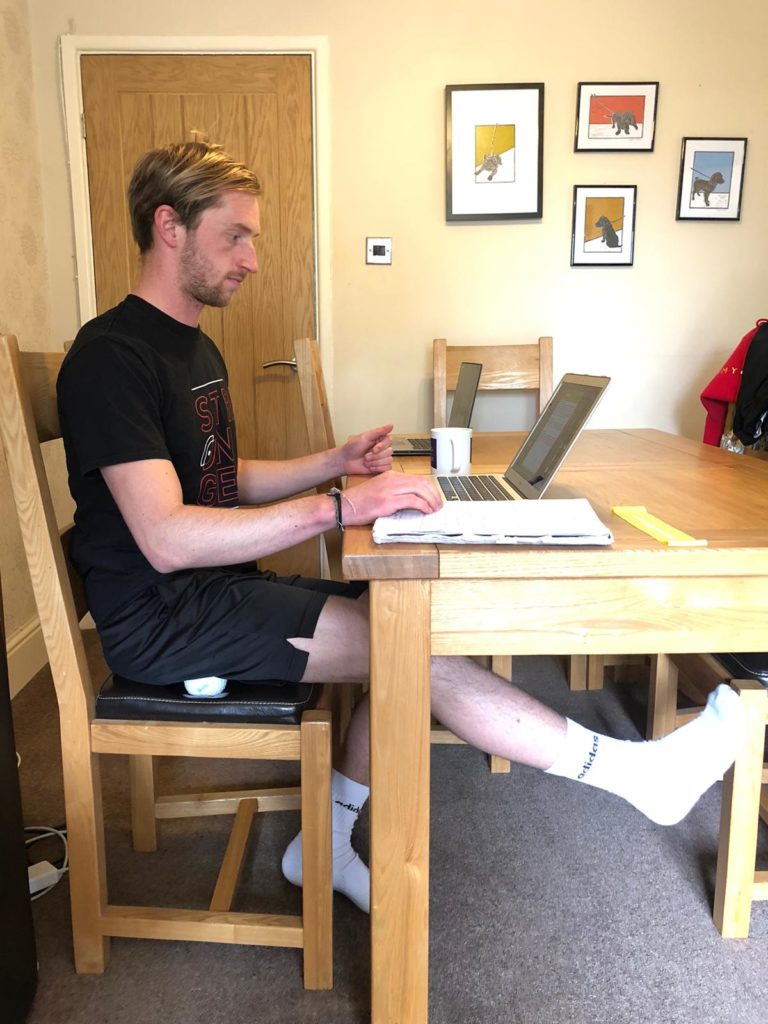
14. Plantarfascia Release
A strong piece of fascia located at the bottom of our foot and can be influenced by tightness of fascia further up the chain. Fascia is a complex structure and works in amazing ways, so if you want to know any more details, I direct you to my previous blog: “Myofascial Maintenance”.

15. Regular Walking
Not only is this good to stretch your legs and reduce the effects of muscular tightness that slowly builds up in a seated posture, but it’s also a great movement strategy for mobility and back pain. Walk at regular intervals- perhaps every hour and this only needs to be for a couple of minutes. If you can combine this with any of the self-help techniques above, then that’s even better!
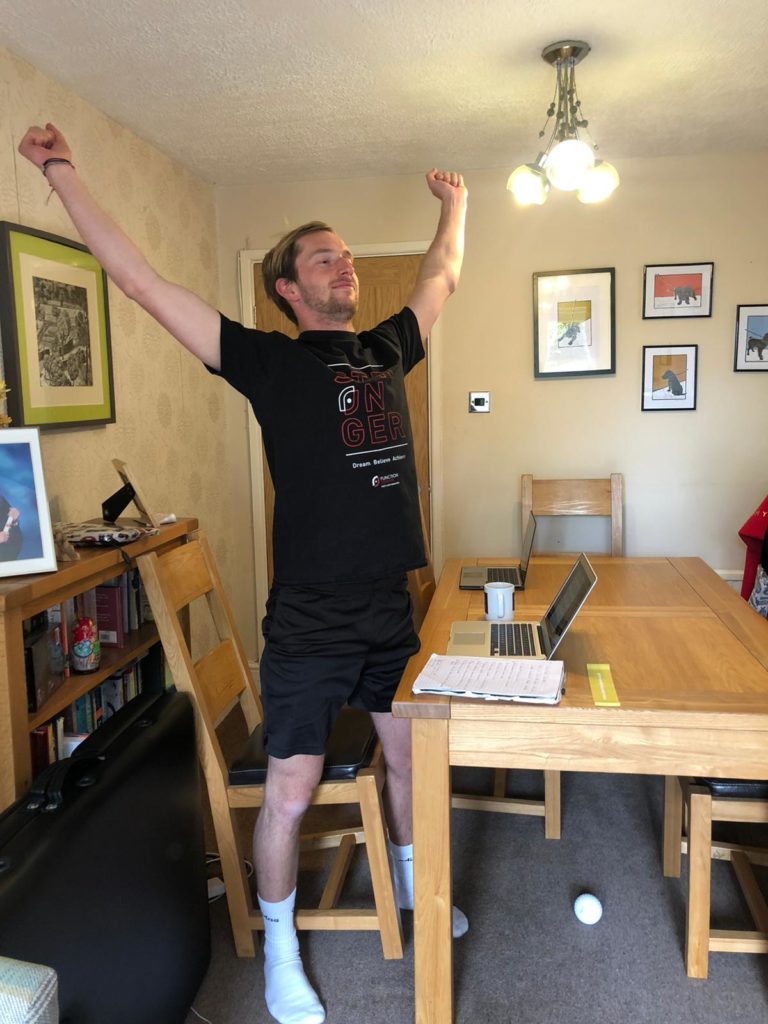
Sounds like a lot to do…but it’s not really! Aim to do at least one/two of these exercises every hour you’re at work, with a small walk as well and I’m sure you’ll feel the difference.
Give them a go!
Contact your local Physio in Leicester today – Function Jigsaw





